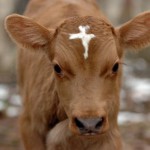That’s what a colleague said when he was ready to leave today. I love my coworkers.
Month: November 2014
Did you know they don’t have cookies in the UK?
What is Cookie Monster supposed to do when he’s staying at the Furchester Hotel if there are no cookies? Is he supposed to just eat biscuits? John Oliver explains.
Funny animal pictures
Funny how this is true…
We are a house of illness and wii

I had man flu over the weekend, and now Bean and Katy are sick as well. The upside is that we plugged in the wii so the casualties can entertain themselves by hacking up monsters.
When healthy eating leads to malnutrition
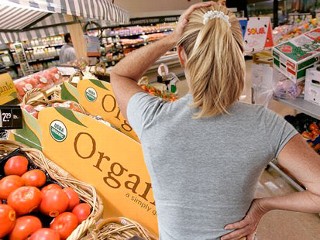 Some doctors and registered dietitians say they are increasingly seeing people whose desire to eat pure or “clean” food—from raw vegans to those who cut out multiple major food sources such as gluten, dairy and sugar—becomes an all-consuming obsession and leads to ill health. In extreme cases, people will end up becoming malnourished.
Some doctors and registered dietitians say they are increasingly seeing people whose desire to eat pure or “clean” food—from raw vegans to those who cut out multiple major food sources such as gluten, dairy and sugar—becomes an all-consuming obsession and leads to ill health. In extreme cases, people will end up becoming malnourished.
Some experts refer to the condition as orthorexia nervosa, a little-researched disorder that doesn’t have an official diagnosis in the Diagnostic and Statistical Manual of Mental Disorders, or DSM, considered the bible of psychiatric illnesses. Often, individuals with orthorexia will exhibit symptoms of recognized conditions such as obsessive-compulsive disorder or end up losing unhealthy amounts of weight, similar to someone with anorexia.
“There are people who become malnourished, not because they’re restricting how much they eat, it’s what they’re choosing to eat,” said Thomas Dunn, a psychologist and psychology professor at the University of Northern Colorado in Greeley, Colo., and a co-author of the article. “It’s not that they’re doing it to get thin, they’re doing it to get healthy. It’s just sort of a mind-set where it gets taken to an extreme like what we see with other kinds of mental illness,” Dr. Dunn said.
Among the proposed criteria: an obsession with the quality and composition of meals to the extent that people may spend excessive amounts of time, say three or more hours a day, reading about and preparing specific types of food; and having feelings of guilt after eating unhealthy food. The preoccupation with such eating would have to either lead to nutritional imbalances or interfere with daily functional living to be considered orthorexia.
Some Diets That Might Leave Out Nutrients
DAIRY-FREE: Pro: Some people feel better when avoiding dairy even if aren’t truly allergic. Challenge: Make sure to get calcium, phosphorus and potassium from other foods.
RAW VEGAN: Pro: Plant-based diets are nutritious and are associated with lower rates of obesity and chronic disease. Challenge: Some vitamins, especially B12, are mostly in animal products. Cooking can make some nutrients more bio available.
JUICING DIETS, CLEANSES: Pro: If used short term to kick start eating more fruits and vegetables, this diet can be acceptable. Challenge: Juices aren’t nutritionally complete. And cleansing is a misnomer as your body is ‘cleansed’ by the kidneys, digestive tract and lungs.
GLUTEN-FREE: Pro: Gluten is a must avoid for people with an allergy. Those who are sensitive may find they feel much better. Challenge: A complete diet can be achieved with energy- and nutrient-rich foods such as non-wheat grains.
Sometimes other illnesses can lead to orthorexia. David Rakel, director of integrative medicine at the University of Wisconsin School of Medicine and Public Health, estimated that 10% to 15% of the patients who come in with food allergies and related problems develop an unhealthy fear of particular foods.
Nutritional therapy often involves elimination diets—stopping to eat certain foods to check if they are contributing to an inflammatory condition, Dr. Rakel said. Under the program, the foods are later gradually reintroduced, but some people continue to avoid them. “People are getting so strict with their health choices that they’re not getting the nutrients that they need,” he said.
“Someone on paper may be perfectly healthy and their blood work is great and their weight is fine but their behavior has become obsessive with food,” said Marjorie Nolan Cohn, a New York City-based dietitian and national spokeswoman for the Academy of Nutrition and Dietetics, a professional organization. A red flag is when someone’s eating habits are making them avoid social engagements, Ms. Cohn said. “They may not be able to go out to a restaurant with their friends because they don’t know what’s in the food or it’s not cooked in a certain way or what if it’s not organic olive oil?” she said.
Canadian gin? Must try!
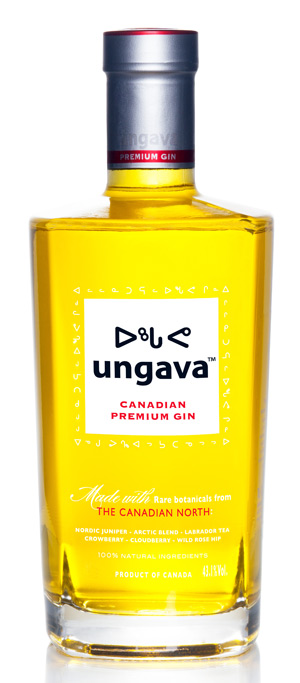
It is a difficult gin to miss. When Ungava won a Best of Show award at the prestigious World Spirits Competition, a judge noted its “unusual colour that helps grab your senses.” It’s perhaps the most polite way of drawing attention to Ungava’s yellow tint, about which producer Charles Crawford is slightly more blunt. “It’s a bit like morning’s vitamin-enriched urine,” he says. His PR people prefer “sunshine yellow.”
Ungava Gin is all about trying to paint the portrait of a place. Firstly, the Cree font near the word Ungava, tries to draw a parallel between many of the Cree nations which live in Northern Quebec. Secondly, Ungava makes use of a series of botanicals native to the northern Quebec region to create a connection with a place.
The place that Ungava is establishing ties to is Ungava Bay, a shallow bay with a cold climate not entirely conducive to plants and agriculture. Only a small bit of the southern piece of the bay is within the juniper’s range. Every year, Crawford hires “these two guys from Kuujjuaq” (he’s unsure of their names) to pick the botanicals during Ungava’s four-week harvesting season, which usually begins in late August. The pair pack “a couple hundred kilos” of their pickings into clear, pillowy bags and send them 1,500 km straight south to Ungava’s production facility in Cowansville, about an hour’s drive east of Montreal. A neutral spirit made with locally grown corn is infused with the botanicals.
Let’s take a look at them since most of them are quite unique to this gin.
Cloudberry: This tart berry grows in only very small quantities in its native range. Though hard to find, it has been used in many northern peoples’ food cultures. Many native northerners made spirits from them, but its most commonly found in jellies and jams. Also known as the “Bakeapple.”
Wild Rose Hips: It’s the fruit of the rose bush, and been used for jellies, teas and are very rich in vitamin C.
Arctic Blend: is a creeping evergreen used as a kind of tea by northern peoples.
Labrador Tea: is a flowering bog plant with white poofy flowers also used as a tea by the Inuit.
Crowberry: are another evergreen of the north, and these low lying plants produce round purplish berries that are used in jams and pies as well. A lot of tart/semi-sweet fruits in here.
You know you’re being corrupted by the locals when…
…you really start to like the stinky cheeses :)
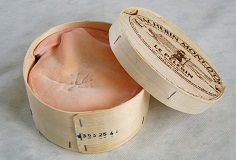 |
Vacherin Mont d’Or from Switzerland is a soft, rich, seasonal cheese made from cow’s milk in Switzerland or France, usually in villages of the Jura region (an origin that has been officially controlled since 1981), and has a grayish-yellow washed rind. It is often served warmed in its original packaging and eaten like fondue. |
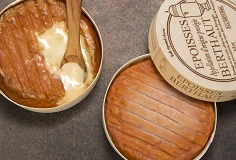 |
Époisses is a pungent unpasteurised cows-milk cheese. Smear-ripened (washed in marc de Bourgogne, the local pomace brandy), it is circular, with a distinctive soft red-orange colour. It is sold in a circular wooden box, and in restaurants, is usually served on a spoon due to its extremely soft texture. The cheese is often paired with Trappist beer or even Sauternes rather than a red wine. Each cheese is rinsed up to three times per week in a mixture of water and marc, and brushed by hand to spread the bacteria evenly over the surface. The yeast and fermenting agents produce the distinctive orange-red exterior, as it develops over a period of around six weeks. |
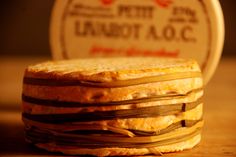 |
Livarot is a French cheese of the Normandy region, and protected by an Appellation d’Origine Contrôlée (AOC) since 1975. It is a soft, pungent, washed rind cheese made from cow’s milk. It is both beloved and reviled for its earthy aroma. It is sold in cylindrical form with the orangish rind wrapped in 3 to 5 rings of dried reedmace. For this reason, it has been referred to as ‘colonel’, as the rings of dried bullrush resemble the stripes on a colonel’s uniform. |
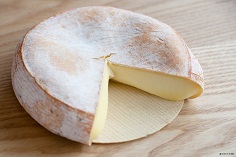 |
Reblochon is a French cheese from the Alps produced in the region of Savoyand has been granted the AOC title. It is a soft washed-rind and smear-ripened cheese traditionally made from raw cow’s milk. It has a soft centre with a washed rind covered with a fine white mould. Reblochon has a nutty taste that remains in mouth after its soft and uniform centre has been enjoyed. It is an essential ingredient of tartiflette, a Savoyard gratin made from potatoes, bacon (lardons), and onions. |
Keep the sheeple afraid, and you can do what you want with them.
Is it sad, or scary, or both, that something that Hermann Goering said in the context of the Nuremberg trials seems to be poignantly relevant to the current political climate in North America?
“Why, of course, the people don’t want war,” Goering shrugged. “Why would some poor slob on a farm want to risk his life in a war when the best that he can get out of it is to come back to his farm in one piece. Naturally, the common people don’t want war; neither in Russia nor in England nor in America, nor for that matter in Germany. That is understood. But, after all, it is the leaders of the country who determine the policy and it is always a simple matter to drag the people along, whether it is a democracy or a fascist dictatorship or a Parliament or a Communist dictatorship. Voice or no voice, the people can always be brought to the bidding of the leaders. That is easy. All you have to do is tell them they are being attacked and denounce the pacifists for lack of patriotism and exposing the country to danger. It works the same way in any country.”
Remembrance day

In Flanders fields the poppies blow
Between the crosses, row on row,
That mark our place; and in the sky
The larks, still bravely singing, fly
Scarce heard amid the guns below.
We are the Dead. Short days ago
We lived, felt dawn, saw sunset glow,
Loved and were loved, and now we lie
In Flanders fields.
Take up our quarrel with the foe:
To you from failing hands we throw
The torch; be yours to hold it high.
If ye break faith with us who die
We shall not sleep, though poppies grow
In Flanders fields.



